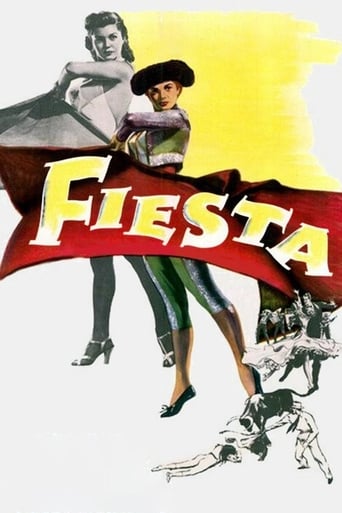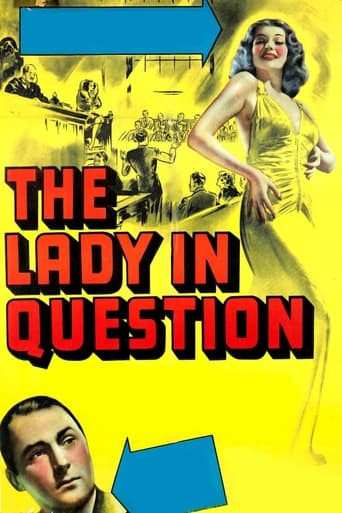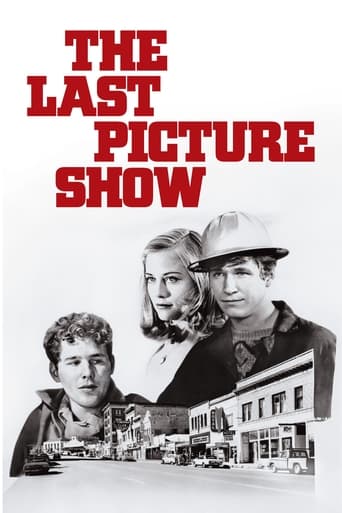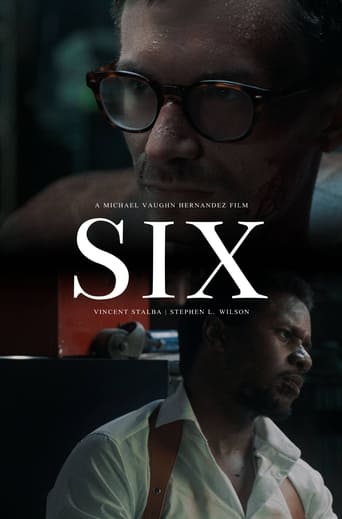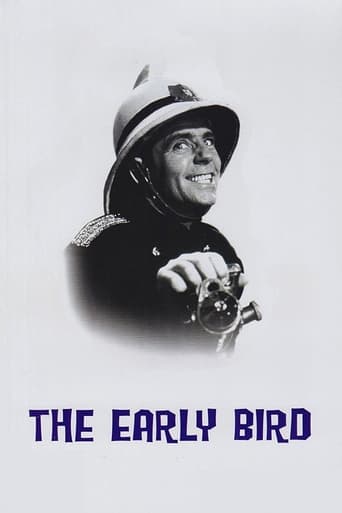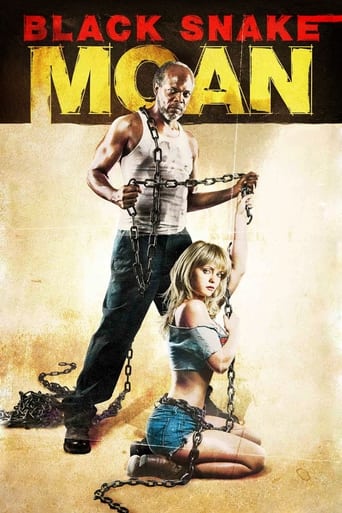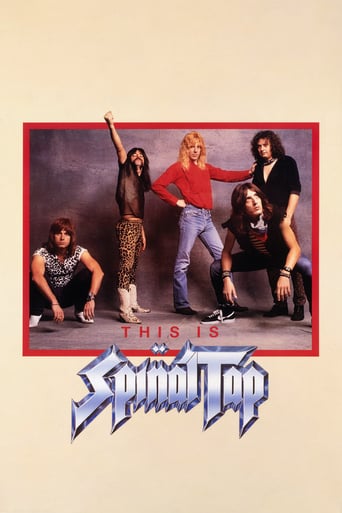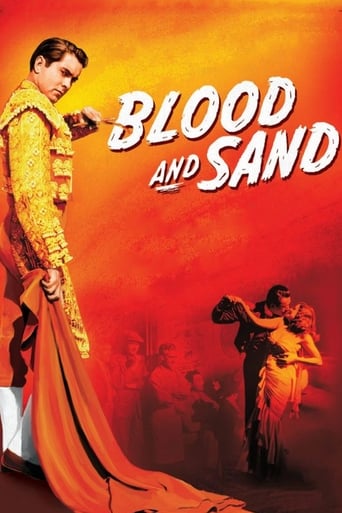


Blood and Sand
Bullfighter Juan Gallardo falls for socialite Dona Sol, turning from the faithful Carmen who nevertheless stands by her man as he continues to face real danger in the bullring.
-
- Cast:
- Tyrone Power , Linda Darnell , Rita Hayworth , Alla Nazimova , Anthony Quinn , J. Carrol Naish , Lynn Bari


Similar titles
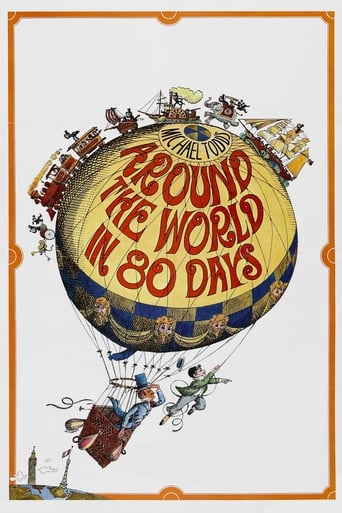
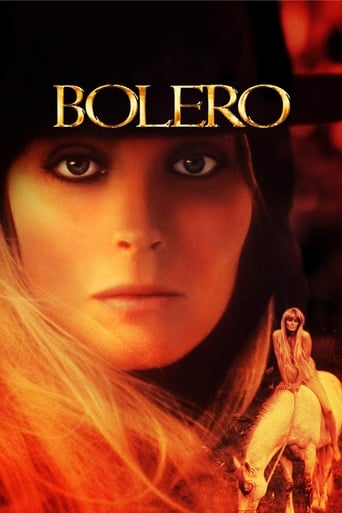
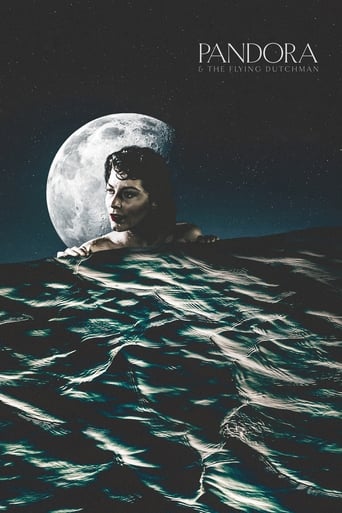
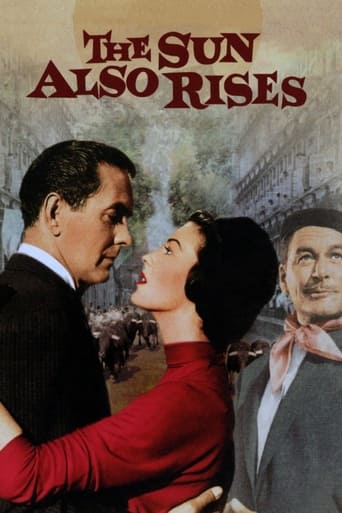

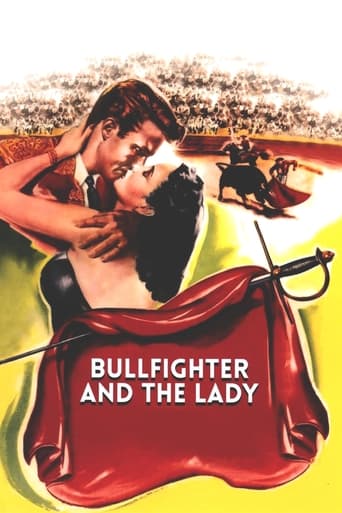
Reviews
Plenty to Like, Plenty to Dislike
everything you have heard about this movie is true.
It’s fine. It's literally the definition of a fine movie. You’ve seen it before, you know every beat and outcome before the characters even do. Only question is how much escapism you’re looking for.
The story, direction, characters, and writing/dialogue is akin to taking a tranquilizer shot to the neck, but everything else was so well done.
Even in the ring of criticism of this 1941 film, what's all the shouting about?This is basically a run-of-the mill story that has been greatly over-rated through the years.In my opinion, the film goes downhill rapidly when Juan, Tyrone Power, meets up with Rita Hayworth, who is nothing more than a seductive temptress here.As a young boy, Juan showed his arrogance, his defiance and feelings of superiority. He goes off to Madrid comes home 10 years later, a success, though illiterate. Marrying his childhood sweetheart, Linda Darnell, and having a good life, he throws it all away when he meets up with the Hayward character, essentially a woman who gets bored easily and casts people aside like an old shoe.
Directed by Rouben Mamoulian, 1941's "Blood and Sand" is based on the Ibanez novel and a remake of the 1922 film starring Rudolph Valentino. Darryl F. Zanuck remade "The Mark of Zorro" and "Blood and Sand" for his top star, Tyrone Power. Despite a comment here that this film established Power as a star, he had been a star since 1936 and a superstar since 1939. But with the success of Zorro and this film, Power's fate as a swashbuckling hero was sealed. He wouldn't break out of the box until the mid-'50s."Blood and Sand" tells the story of Juan Gallardo, son of a famous bullfighter killed in the ring, who aspires against his mother's wishes to be a bullfighter himself. He becomes a star of the ring, marries his sweetheart, is seduced by a temptress, falls into disrepute and turns to drink. Woman has been the downfall of man since Adam and Eve, so the story goes - a constant theme of novelists.The cinematography is incredible. Some of the shots resemble old paintings - Juan's cuadrilla in a line praying in church while Juan is at the altar; the final shot of Nacional's dead body in a bed under a crucifix; the blood symbols: a woman in her excitement over Juan's triumph smearing her lipstick as she runs her hand across her mouth; Dona Sol's red lips and scarlet fingernails; the cool, magnificent beauty of Dona Sol's elaborate home; the pasodoble Dona Sol dances in an incredible rose-colored gown with up and coming matador Manolo; Juan turning from the bull as he drags his cape behind him - all breathtaking, and more than worthy of its Oscar for Best Cinematography. Mamoulian's direction is flawless, telling the story through the actions of the characters. In one scene, Juan falls asleep on Dona Sol's patio; he wakes alone and walks through the house, seeking an exit; he opens a door and it's Dona Sol's bedroom, where she lays sleeping...In the next scene, Juan wears the ring she put on her finger after it was returned by her last suitor (George Reeves). Mamoulian tells us the affair has begun by showing us a ring.Power was established before "Blood and Sand," - Rita Hayworth wasn't, but as the sadistic Dona Sol, gloriously photographed and gorgeous beyond belief, superstardom was hers once this film was released. Watching Tyrone Power as Juan is frustrating because he is so good. Why he never received the credit for his acting that he deserved can only be attributed to his impossible beauty. By the time of this film, he is past his pretty stage and just entering handsomeness. A sweet, humble, perfect gentleman in real life, Tyrone Power's Juan Gallardo lumbers through Dona Sol's house, eats with the manners of a cave man, chews with his mouth open, wears smelly fragrance and is both arrogant and uneducated. When doing a film, the actor had to shave three times a day; here, in order to make him look seedier as time passes, he begins to sport a faint 5 o'clock shadow. There was a comment made that Power hadn't yet had dental work. Power never had cosmetic dental work. Like the model Lauren Hutton, he had a small space between two teeth and, like Lauren Hutton, he had a piece of enamel to place there. For this role, he didn't use it. He didn't care about his looks and in fact, came to resent them. Space between two teeth and slicked down hair or not, his huge eyes, framed by the world's longest eyelashes, practically smolder through the camera.Power's performance is simply fantastic - especially when you consider that attending a real bullfight, he became nauseous. His wife had to say she was sick so they could leave! All of the acting is marvelous, but besides Power, there are several standouts - Alla Nazimova is brilliant as Juan's pessimistic mother, her performance making the role seem even larger; Hayworth's beauty is mind-boggling and she gives Dona Sol not only sexiness and sensuality but coldness. According to Power's stand-in, all the actor did off-camera was stare at Hayworth. Gee, wonder why. Linda Darnell, another underrated actress, is sweet as Juan's loving wife. John Carradine, as the socially-conscious Nacional, is excellent as one of the cuadrilla; and as a turncoat, Laird Cregar gives an appropriately bombastic performance. Ambitious Manolo is played by a young, attractive Anthony Quinn, who is perfect in this film, and his small, showy role portends fabulous things to come from him. The only criticism from me would be that the little boys playing Juan and the cuadrilla in the beginning of the film are too American. Before anyone says anything about the lack of accents, I will repeat the convention - if you're playing a character in a country where English is not spoken, then you're not speaking English -you're speaking the language of the country. Therefore, no accents are used. Spaniards don't walk around Spain all day speaking English with a Spanish accent to other Spaniards.This film is a curiosity - there is an aura of impending death as predicted by the Nazimova character, and in fact, many of the fine actors appearing in the movie came to early and/or tragic ends. Tyrone Power died 17 years later, at the age of 44, of a heart attack while making the film "Solomon and Sheba" and didn't live to see his only son; Linda Darnell would die in a fire when she was 41; Laird Cregar only lived 3 more years, to age 30, succumbing from a heart attack. The saddest is Rita Hayworth, a true goddess. After abuse and great unhappiness, she developed Alzheimer's in the early 1960s and died in 1987. But what wonderful legacies they left us."Blood and Sand" is a jewel in the Twentieth Century Fox crown, a great achievement in acting, directing, and cinematography.
Tyrone Power, as handsome as any star in history, with a magnetic screen presence is, however, about as believable in the role of a Spanish bullfighter as Oliver Hardy or Buster Keaton. Rita Hayworth gnaws the scenery like a horde of beavers, but she would be pleasurable to watch just eating a chicken wing. Linda Darnell is so long-suffering she'd depress Norman Bates. Finally Anthony Quinn (and not for the last time in his career), seems to have imbibed a gallon of coffee and taken a handful of downers at the same time, and is undergoing a battle as to which will prevail directing his demeanor.Hayworth and Quinn's paso doble is excellent to watch, yet so "over-the-top" at the same time - but neither of them ever were strangers to "over-the-top." But because, rather in spite of, these aspects, the film is thoroughly enjoyable, and the plot is true to the classic. All of these mannerisms from the cast are outstanding examples of earlier, overdrawn movie drama, from its inception into the 1950's. They provide an added dimension when seeing again films such as this - providing a nostalgic view of this earlier genre, as well as the famous stars of the past.
In English speaking countries we barely recall his name, but in his heyday (the 1910 - 1920s) Vicente Blasco Ibanez was one of the most popular novelists in the world. His stories, in particular his tale of bullfighters in Spain (BLOOD AND SAND) and his look at the effect of World War I on Europe and on his native Argentina in THE FOUR HORSEMAN OF THE APOCALYPSE, were avidly read all over the Americas and Europe. Movies were made of his tales, including other lesser stories like THE TORRENT and MARE NOSTROM. But like so many other figures of literary importance in that period, Blasco Ibanez has gradually been eclipsed. Yet, I can vouch that when I was working in my high school library in 1970 - 71 copies of BLOOD AND SAND and THE FOUR HORSEMAN were on the shelves.BLOOD AND SAND is more than just a look at the rise and fall of the career of a great matador (Tyrone Power as Juan Gallado) but a look at the darker side of athletic fame in the world in general. Power follows his father as a bull fighter, despite the latter's death in the ring. He has an entourage including his closest friend, Nacional (John Carridine) and Garabato (J. Carroll Naish) and marries a good woman (Carmen Espinosa - Linda Darnell), but he also has a greedy sister and brother-in-law to conjure with (Lynn Bari and Monty Banks), and he has to deal with the leading bullfighting critic (Curro - Laird Cregar). There is also his other old friend, but growing rival, Manola (Anthony Quinn) and the wealthy groupie who hurts his home life and image (Dona Sol - Rita Hayworth).When the going is good, Power allows his fortune and success go to his head. He does not recall that Garabato happened to be a great matador too, but was reduced to poverty when he ceased pleasing the public (or Curro, for that matter), and was only saved by Power's personal goodness. He does not heed the comments by Nacional about the blood-thirst at the heart of the game of the bullfight. His attractiveness to Dona Sol is dependent on his greatness as a matador. And Manola is slowly catching up.There is a lot of religious symbolism in Blasco Ibanez work. At the end of THE TORRENT, Greta Garbo, in her last delirium, gives a sum of money that might have saved her to a stranger that she thinks is Christ. In THE FOUR HORSEMAN a set of fireplace andirons come to life in the skies of Europe showing the pestilence and evil hitting the center of the world in World War I. And even here, Rouben Mamoulian brings in the symbolism. Nacional sacrifices himself for Juan in the ring, and is fatally gored. As he is dying in a bed, surrounded by Juan and his friends, Nacional is set up with his arms in a "crucifixion" position on the pillows at the head of the bed. He is denouncing the evil of bullfighting as he dies, a Christ unheeded in his world.Also language plays a hidden role. Laird Cregar's self-important and venal critic has the last name "Curro". In Spanish, "Curro" is the rectum of a bull or beast. And at the start of the film Cregar proudly announces his name as a guaranty of authenticity on his views about the matadors.The fact that Juan is a bullfighter should not hide the universality of the story. It could be about the rise and fall of a football, soccer, or baseball player - but the bullfighting background is due to the cultural background of the author, and because of the brittle nature of success as a bullfighter - you see, bullfighting is more than avoiding being gored by a bull. It depends on the style and technique of the matador, and how elegantly he moves in the ring. Age can slow a man down, ruining his reputation (as it did with Garabato). Or personal problems may affect ring performance (as it does with Juan). And once that happens the fans lose interest and even faith in the matador.So Juan has no where to go but down, having reached the top. That is the fate of all matadors. In the end he momentarily redeems himself, but at the cost of his life. At least he will not face growing old in poverty as Garabato nearly did. But it is a downer of an ending - possibly the saddest of any of the Tyrone Power films before 1946's NIGHTMARE ALLEY.

